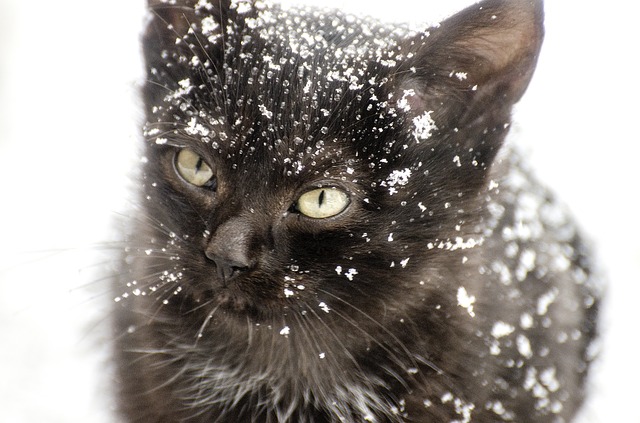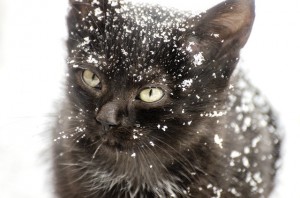The Hazards of Hypothermia

Every winter, cats die due to being left outside in the cold. That they have fur does NOT ensure their ability to survive out of doors for any length of time when the thermometer plummets.
 What they DO need is shelter and warmth. And if your precious puss slips outside unseen, she must be found as swiftly as paws-ible or hypothermia will set in.
What they DO need is shelter and warmth. And if your precious puss slips outside unseen, she must be found as swiftly as paws-ible or hypothermia will set in.
Hypothermia is the extreme lowering of a cat’s body temperature when she’s either been exposed to frigid conditions for too long or if her fur has gotten wet in the cold and the wind. This drop will cause her heart rate and breathing to slow down, and the results of sustained, severe hypothermia can include frostbite, neurological problems (including coma), heart problems, kidney failure, cessation of breathing, and ultimately death.
The symptoms to look for are strong shivering and trembling followed by no shivering, sleepiness, weakness or lethargy, fur and skin cold to the touch, a body temperature below 95 degrees Fahrenheit, decreased heart rate, dilated pupils, pale or blue gums and inner eyelids, difficulty walking or breathing, and stupor, unconsciousness or coma.
If you suspect your kitty has hypothermia, dry her thoroughly with either towels or a hair dryer set on Low and held a foot away from her. Wrap her in a blanket first warmed in the clothes dryer. Wrap a warm hot water bottle in a towel and place it on her abdomen. Take her temperature with a rectal thermometer, and if it’s below 95 degrees, bring her to your vet or an emergency clinic immediately.
If her temperature is above 95 degrees, take it again every ten to fifteen minutes while performing the above-mentioned warming techniques. Once her temperature reaches 100 degrees or more, remove the hot water bottle, but continue to keep her warm. To be doubly certain she’s safe, bring her to your vet the same day since one bout of hypothermia can make her prone to it again.


